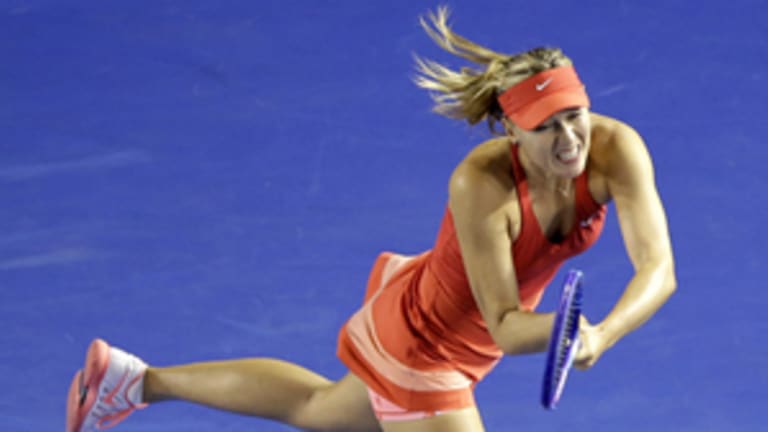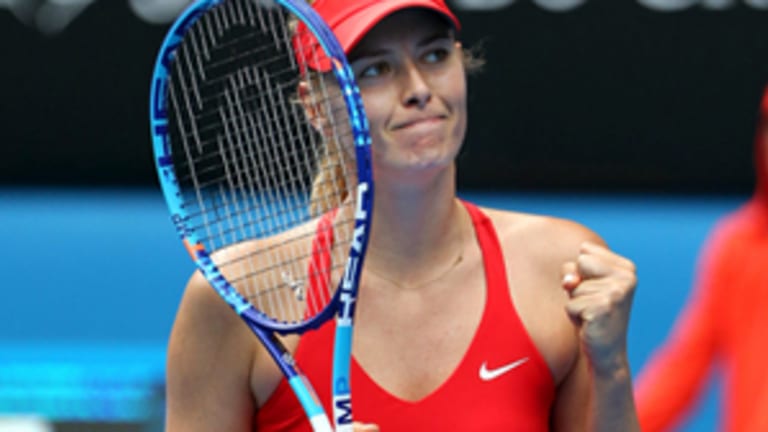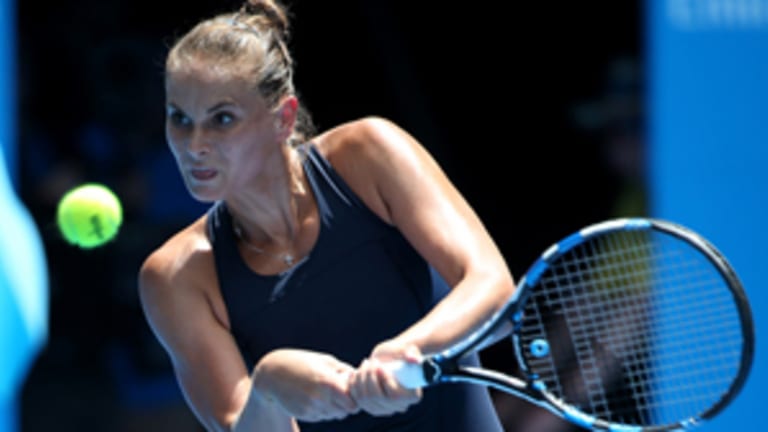"That’s what champions do": Of all the clichés associated with tennis, this one might be the most painful on the ears. Sometimes I feel like I will, literally, weep with gratitude when a commentator doesn't say these words after a great player makes a clutch shot.
So I was happy that, even as Maria Sharapova was pulling out a Houdini-esque, 6-1, 4-6, 7-5 comeback win over Alexandra Panova last night, I didn’t hear the commentators from Australia go to that particular well in the closing games. They must have been tempted: Sharapova is nothing if not a champion, and she won a match in a way that we associate with the game’s grittiest competitors: without her best stuff. (That’s another cliché, of course, but I guess you can only avoid one at a time.)
What Sharapova showed is that the phrase should really be "that’s what champions do—except when they don’t." Even the most invincible players lose on a regular basis; Maria has done it 135 times in her 13 years on tour. Whatever champions do, she didn’t do it on those occasions. And yesterday, even as she was clambering back from 1-4 down in the third set to a player ranked No. 150 in the world, Sharapova made a lot of questionable choices and did a lot of things that, coming from anyone else, would have been flat-out wrong.


